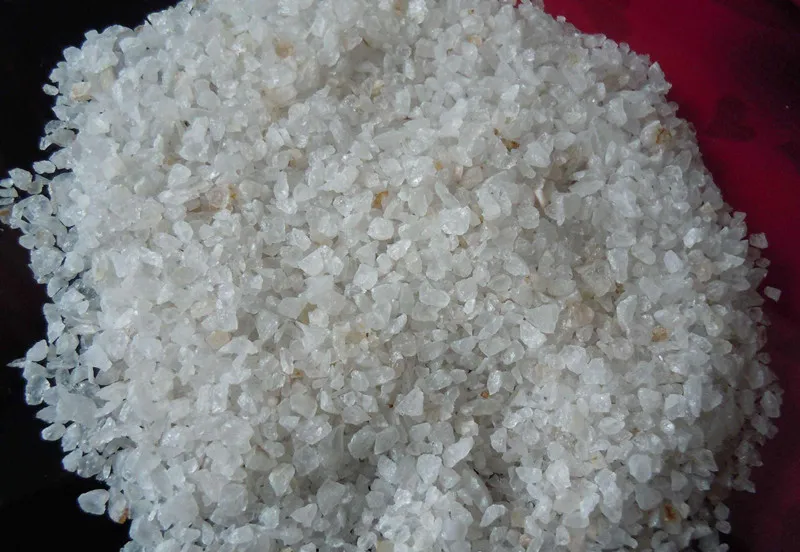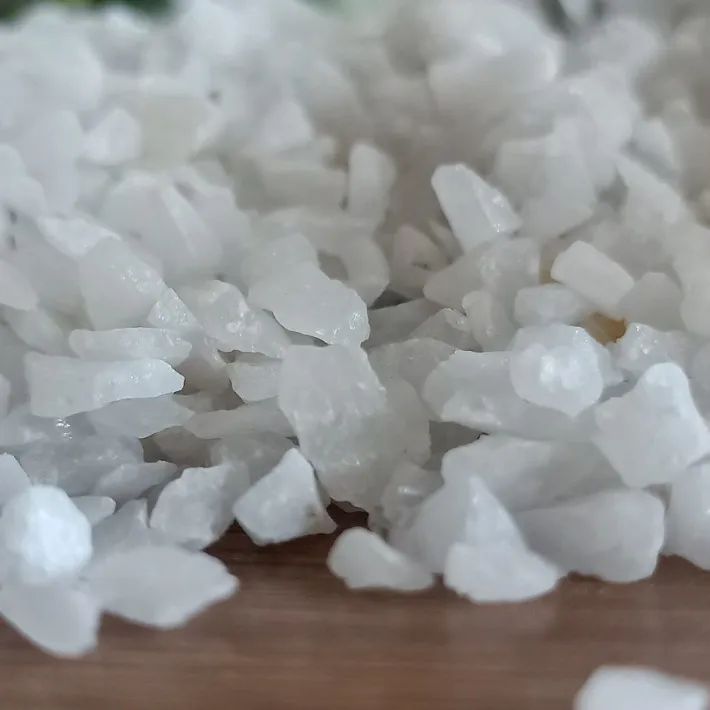High-purity quartz sand processing requires pickling. This is accurate under current mineral processing conditions. Pickling has various effects and functions. These are difficult to replace with water washing, flotation, or other methods. It can remove impurities. They are located on the surface of quartz sand particles. They are formed as inclusions or embedded within particles. This is a crucial step in high-purity quartz processing.

In production, acidity, time, and temperature affect pickling. Acid washing, processing, and equipment are also major factors.
Acidity
The pickling process actually allows impurities to react chemically with acids. Under certain conditions, the concentration and composition of acids can vary. The effects of reacting with impurities also vary. So, the level of influence on the quality of high-purity quartz is different.
Quartz ore contains impurities such as epidote, rutile, and mica. Most of these minerals contain metal oxides and salts attached to the surface of quartz ore. It can react with a variety of metal oxides and salts. This forms soluble chlorates. But, it cannot dissolve most silicates.
Many minerals found in quartz contain silicon. Therefore, some hydrofluoric acid is required to dissolve them.
Experimentation shows that at a certain temperature, acidity increases. More reactive molecules per unit volume lead to more activated molecules. This enhances the reaction rate and reduces the pickling effect.
Temperature
Temperature plays a crucial role in the quality of quartz pickling. Epidote and rutile barely react with acid at room temperature. Heating it in acid increases the effect. The hotter it gets, the stronger the effect becomes. The treatment effect is significantly different between winter and summer. This is true all year round. The main reason is the different external temperatures.
Higher temperatures speed up the movement of molecules. This leads to more collisions and slows down the reaction rate. Heating can transform inactive molecules in the solution into active ones. This enhances the reaction rate and enhances the treatment effect.
However, the higher the temperature, the better it is. At 60℃, the acid becomes more volatile. So, we should keep the pickling temperature at around 50℃. Of course, if the pickling equipment is properly sealed. The high-temperature treatment will be better.
Time
When the acidity and temperature are the same. The time of immersion directly affects the removal of impurities. The time must be sufficient. In winter, the temperature is low. The acid reacts slowly with impurities in quartz. It takes an appropriate amount of time to achieve the desired outcome.
In addition, the acid leaching time is also related to the size of the quartz particles. Smaller quartz particles are more likely to come into contact with acid contact. So, the reaction is quicker. Larger quartz particles make the pickling process worse in short time frames. This is because impurities in the particles cannot quickly contact the acid.
Acid washing
Impurities in quartz react with acid. They produce various salts that can dissolve or not. If the acid washing process is not done correctly, it can damage the pickled product’s quality.
For example, when washing acid-treated quartz sand with high-purity water, the acidity decreases. The impurities element Ca will react with HF acid to produce CaF2. CaF2 sticks to the surface of quartz particles. The CaF2 will discolor when drawing quartz glass tubes.
Research shows that the equilibrium principle can stop CaF2. We use it to wash quartz with acid. The pH controls the creation and melting of CaF2. Its mechanism is as follows:
CaF2 ionizes, releasing Ca2+ and F- ions into the solution. As they collide, Ca2+ and F- form CaF2, creating a reversible equilibrium.
Here is the rewritten output:
High H+ concentration leads to HF formation with F-. This reduces F- concentration, promoting CaF2 dissolution.
So, when washing with acid, the pH must be between 0.5-1. Stir for 3-5 minutes. Then, remove the cleaning liquid three to five times. This separates the Ca2+, Mg2+, Fe2+, Al3+, Na+, K+ ions from the cleaning liquid and quartz powder. Then, rinse with a lot of deionized water until neutral. This way, even if some CaF2 remains on the particles. As long as it remains below its solubility limit, no solid will form. This way, the treated high-purity quartz sand will not discolor quartz glass tubes. CaF2 is the cause of discoloration.
Of course, other mineral elements will also cause discoloration. Therefore, high-purity quartz sand must be operated under strict conditions during acid washing.
How to prevent yellowing?
Some manufacturers claim that pickled quartz sand will turn yellow. This occurs after it has been sitting for a while. The main reasons are as follows:

(1) There is no magnetic separation process before pickling quartz sand. After pickling, some mechanical iron remains in the quartz sand. The mechanical iron rapidly oxidizes, causing the quartz sand to turn yellow directly;
The acid washing is not thorough. Acid remains on the surface of quartz particles. This acid will also cause yellowing.
The sand touches the handling tools before it dries. This leads to pollution (oxidation with iron) and yellowing.
Prevent yellowing by setting up a magnetic separation process beforehand. Use acid-resistant and alkali-resistant plastic containers for acid leaching equipment. Dry the sand right after cleaning. Protect all equipment well to keep the sand from touching the iron.
Furthermore, the external environment will also affect the effect of pickling. We must prevent dust pollution in the air. We must control the air during production, packaging, storage, etc.
